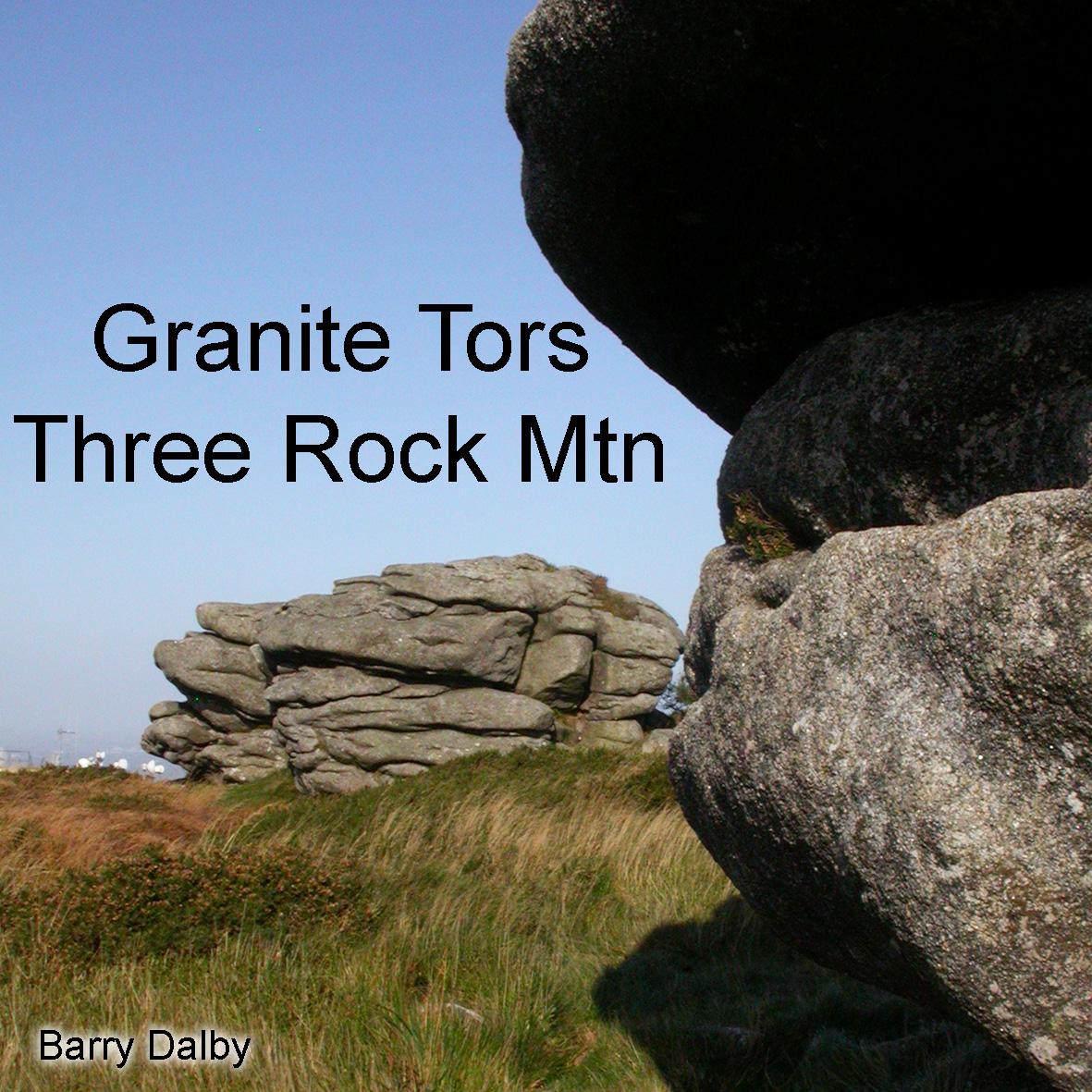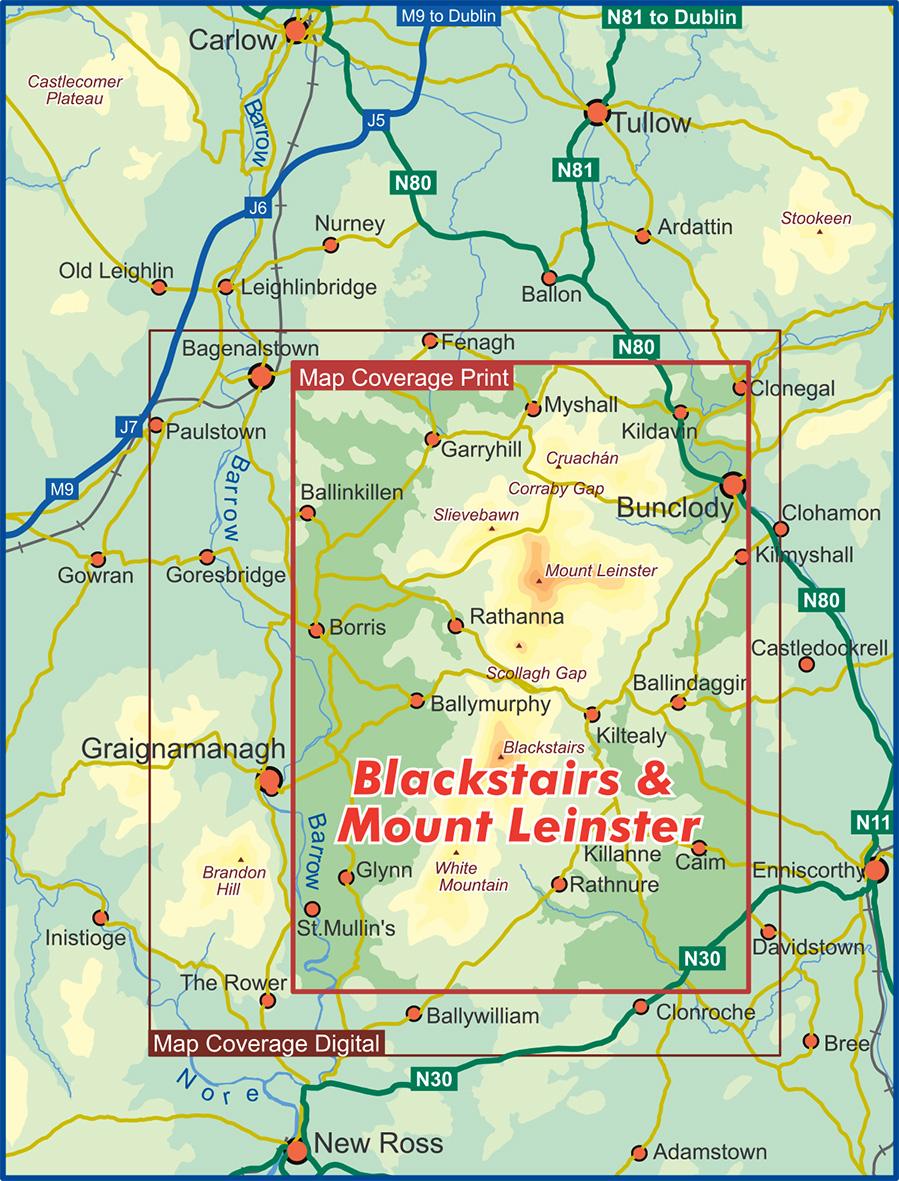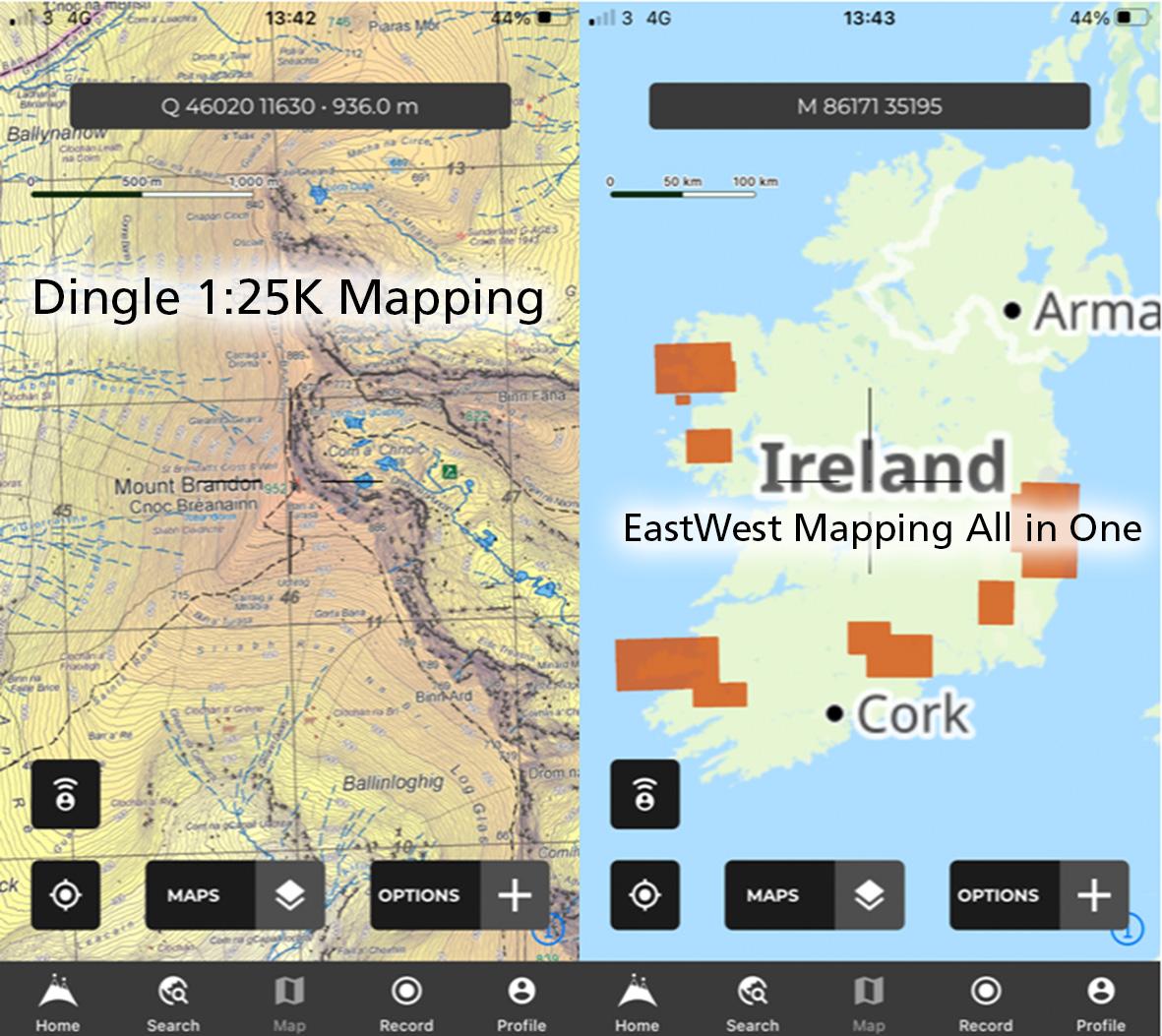Granite Tors
The Dublin Hills may be modest in height and terrain but they sport a few dramatic outcrops of rock. Granite tors as in the photo here can be found notably at Three Rock Mountain and at Cloch na gCon aka Fitzwilliam’s Seat. Three Rock with it’s fenestration of communication masts and nearby Ticknock Wood is a popular and well known spot. Cloch na gCon (Rock of the Hounds) lies a little south on the next hill ridge and overlooks Enniskerry. Both are shown on our popular detailed Dublin Mountains map at 1:25,000 scale.
These large dramatically shaped rock outcrops feature in many photographs of the area. They are made of granite, a rock which formed deep underneath the earths surface from upwelling liquid rock material. The upper layers of this magma cooled slowly under the blanket of overlying rocks, thus forming large coarse crystals of various types which are easily seen. Over time, then the rock covering the granite has been largely worn away to reveal the familiar Wicklow granite.
Granite is not uniform in nature and composition varies from place to place. One of it’s main constituent minerals is quartz which is hard and resistant to erosion, whilst other constituent minerals like feldspar erode more quickly. If these are all mixed up thoroughly, the granite weathers uniformly. But sometimes as the rock cooled, cracks formed which were filled with water and various minerals. Think of it as an unevenly mixed cake, which when exposed to the weather many years later, allows some joints/ cracks to hollow inwards, whilst the harder parts project, thus yielding your classic granite tor as seen here.
#eastwestmapping #dublinmountains #geology




